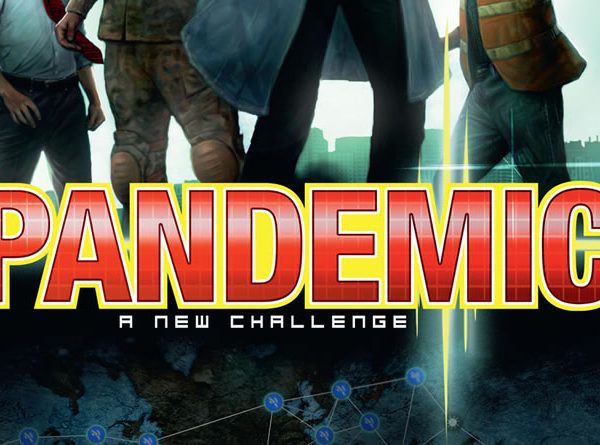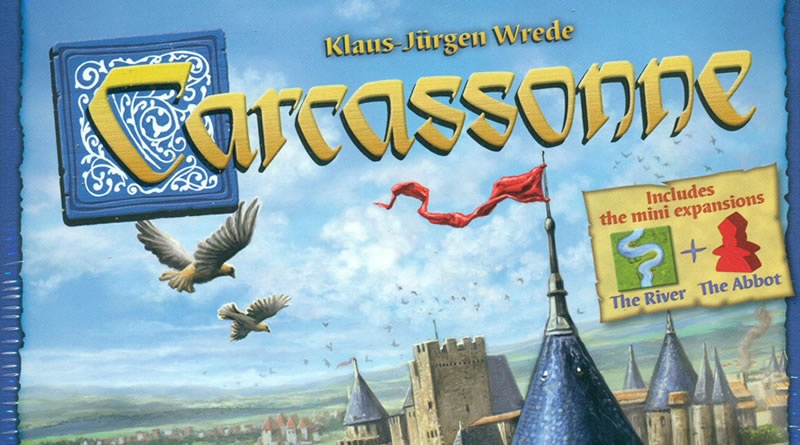 Ticket To Ride is another legendary ‘gateway’ board game that helps to shift people from the mass-produced world of board gaming into the much cooler land of indie publishers. This is one of a small selection of games that has become synonymous with indie gaming and regularly features in top 10 games of all time charts selling millions of copies along the way.
Ticket To Ride is another legendary ‘gateway’ board game that helps to shift people from the mass-produced world of board gaming into the much cooler land of indie publishers. This is one of a small selection of games that has become synonymous with indie gaming and regularly features in top 10 games of all time charts selling millions of copies along the way.
A multi-award winning game, Ticket To Ride first took off after winning the much coveted Spiel Des Jahres (game of the year) award in 2004 and has been opening people’s eyes and delighting players all around the world ever since.
What’s in the box?
- 1 Game Board – a map of North American train routes
- 240 Coloured Train Cars – the playing pieces
- 110 Train Car Cards
- 30 Destination Tickets
- 1 Summary Card
- 5 Wooden Scoring Markers
- 1 Rule Book – only 4 pages, easy to learn
Basic Game Overview
Ticket To Ride is a competitive board game where players collect different train car cards to try and claim railway routes between major cities across North America. Players earn points for themselves by successfully completing routes between cities, with longer routes being more valuable (and more difficult to get!). When any player has two or less Train Car pieces left at the end of a turn then the game enters the end phase. Everyone gets to play just one more turn and then the game is over. Players work out their scores at this point and the winner is declared.
It all sounds very simple, and it actually is. One of the joys of Ticket To Ride is that you can learn how to play it in just a few minutes and crack on with your first game, but don’t let the simplicity of rules fool you into thinking that it is not a complex or strategic game.
What’s it like to play?
Ticket To Ride is a very competitive game, largely due to the fact that there are a limited number of routes between cities on the boards and they can only be claimed once. If a player claims a route very early in the game then there is the risk that this will reveal to the other players what the long term plan is and they may work to try and spoil it by blocking them. Wait too long to claim a route and your plan can also fall apart as you have to spend more Train Cars trying to find a longer route around to get back on track. Worse still you may not be able to complete destination tickets and that will cost you points at the end of the game. Alongside the strategy of the game there is also a large luck factor involved. You need to get lucky with the cards you get and hope that luck holds out by your rivals getting equally unlucky with theirs. The chance elements of the game is what balances everything out so a complete beginner to Ticket To Ride can often win their very first game. They may also quickly lose their second game too!
Each player is in charge of a set of coloured plastic Train Cars, of which there are 45 in each colour. Routes between cities are claimed and marked by players by laying these Train Cars down on the board. The most important part of the game is the collection of Train Car Cards. There are 8 different types of these cards as well as 14 Locomotive cards which act as wildcards. It is the colour of the cards rather than the types that is important as you will be able to claim routes between cities by laying down the correct number of cards in the correct colour that matches the route to claim it. For example, if part of your game plan required you to claim the route between Montreal and New York then you would need to collect 3 blue passenger Train Cards before you can claim the route. This is because the route on the map is blue and there are 3 spaces. To claim Seattle to Helena you would need 6 yellow Train Cards to match the colour and number of spaces on the map. Routes that are coloured grey on the map can be claimed by any colour of Train Cards, as long as the cards being played are all of the same colour.
Although there are 8 different colours of Train Cards they are limited to only 12 of each colour in the deck. Like a good game of poker you have to try and weigh up your chances of completing a hand of a particular colour. If it is late in the game and you are holding out to try and complete a route that requires 6 cards to be placed then you might realise that 8 cards of that colour have already been placed so you will never achieve it…unless you get lucky with Locomotives. The wildcard Locomotive Cards can be used to represent any of the colours, so if you want to claim a red route with 4 spaces then you can play 3 red Train Cards and 1 Locomotive Card (or 2 of each, etc).
Destination Tickets are also important as they can make or break a game-winning performance. If you hold a Destination Ticket and manage to claim the route shown on your ticket then you will be awarded bonus points at the end of the game for doing so. The value of the bonus points is shown on the individual tickets. For example, if a player holds the Destination Ticket for Seattle to New York and completes the long route between these destinations then they will earn a whopping extra 22 points at the end of the game. If you fail to complete a route for a Destination Ticket you are holding at the end of the game then the points on the ticket are deducted from your final score!
Knowing when to hold a Destination Ticket and when to release it is an important part of the game. If you hold onto an ‘expensive’ ticket even though it is clear that you will never complete that route then you are just stacking up penalties at the end.
Which brings me on to the order of how the game is played. At the start of the game each player is dealt 4 Train Cards and 3 Destination Tickets. You can keep all 3 Destination Tickets if you choose but you can also return one of them to the bottom of the deck if you don’t fancy it. Once you begin playing each player takes a Game Turn action, of which there is a choice of three (but only one can be performed). Players can either draw more Train Cards (up to 2), Claim a Route (subject to having the right Train Cards to do so) or draw 3 more Destination Tickets of which at least one of them must be kept (but you can keep 2 or 3 if you want).
Choosing which action to take is critical for bringing your strategy together, but remember that you may find yourself waiting for a particular Train Card for too long and your plan can fall apart. Not so good if it happens to you, but very entertaining as the frustration builds in one of your rivals over a number of turns! Even better if you claim the route he or she was waiting for!!
The final aspect of the game that can be the difference at the end is the Longest Route Bonus Card. When the game is over the player who has managed to build the longest continuous route around the board wins this bonus card and gets the extra 10 points that comes with it. We have seen some epic games where it has been so close at the end of the game only for a player who thought they had won to lose out by a couple of points because the closest rival took the longest route prize.
Who would like it?
Ticket To Ride is a board game that can quickly be loved by pretty much anybody, except maybe the darkest of souls who is allergic to good, clean fun. It is recommended for player of 8 years and older and this feels about right, but we have played with a 6 year old and she still had a lot of fun, but did need a little bit of coaching throughout. It can be played with only 2 players up to a maximum of 5. The 2 player game is great but it does benefit from having 3 or more players and we have found that 4 players is about the optimum.
Because there are so few rules, new players pick it up in minutes but because of the strategy and chance elements veterans of the game are unlikely to ever tire of playing it. It is a perfect family game as you can complete a 4 player game within an hour, so having a couple of games in an afternoon or evening is easy to do. For adult groups it’s great to open and get into after dinner and fits easily on any size of dining table and also plays perfectly well lying on the living room carpet.
Anyone who has ever enjoyed a board game at any point in their life will love Ticket To Ride. The game has also been expanded a few times in recent years, and if North America isn’t your thing then there is a European version and a Nordic Countries release also. Rails & Sails was also unveiled in 2016 which has a double sided board and introduces ships as well as trains. For mini-gamers First Journey was also released in 2016 which is suitable for 2 to 4 players aged 6 years and older. The board is smaller and there are less spaces between destinations so an interesting idea for much younger children to start with but our advice is to get your 6 and 7 years olds into this full version as quickly as possible.
Summary
Believe the long-standing hype about Ticket To Ride, it is outstandingly good in its simplicity and elegance and has become a modern classic. A board game about rail travel might not sound great when you first introduce someone to it, but just open the box and get playing and they will understand why you have raved about it. For everything it claims to be it is perfect and every household that likes games should own it. If you know someone who doesn’t own it then that’s their next Christmas or birthday present sorted out.
Our Verdict

11 out of 12…(with a +0.5 modifier)…a fabulous game!!!!
Publisher: Days of Wonder
Designer: Alan R. Moon
No. of Players: 2 – 5
Recommended Age: 8+
Time To Play: 45 mins to 1 hour
RRP: £39.99



